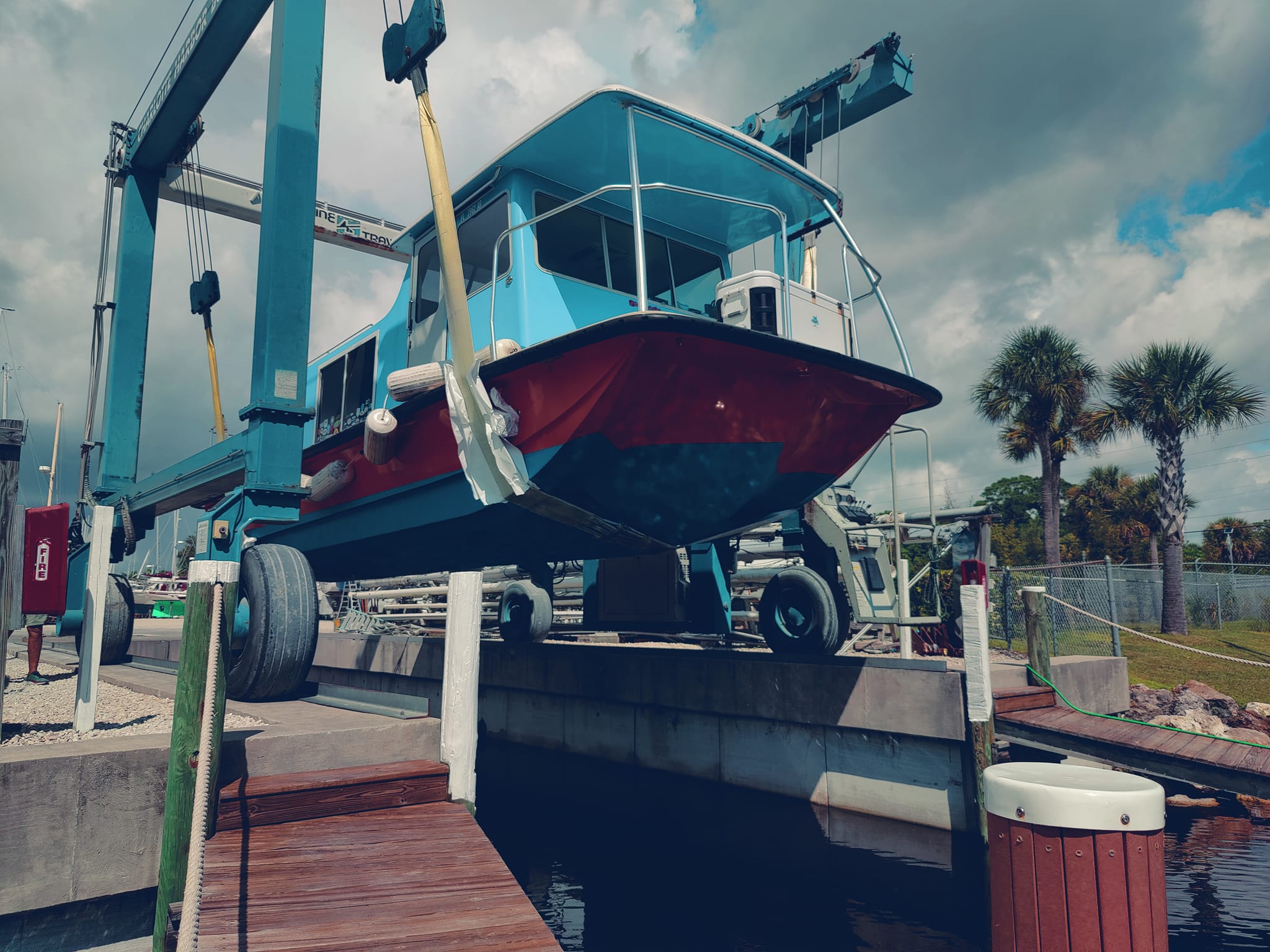Boatyard Services
Running Gear & Thru-Hulls
- Prop Shafts & Cutlass Bearings
- Rudders & Props
- Shaft Seals & Couplers
- Thru-Hulls
- Trim Tabs
and more!
No one has a greater interest in maintaining your running gear than the people who spend the most time under your boat. With decades of combined experience our technicians are experts in getting your running gear working like new.
Services
Our Boatyard Services
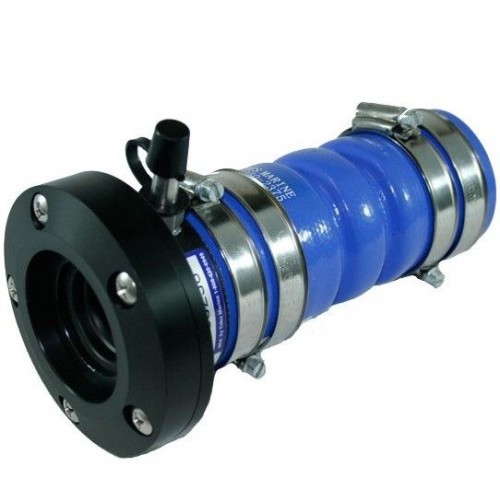
Shaft Seals
Replace leaky dripless shaft seals before they become a problem
usually requires a haul-out
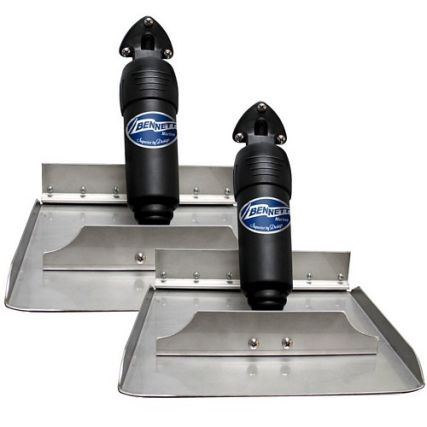
Trim Tabs
Replace or repair damaged or pitted trim tabs and stainless hardware
may not require a haul-out
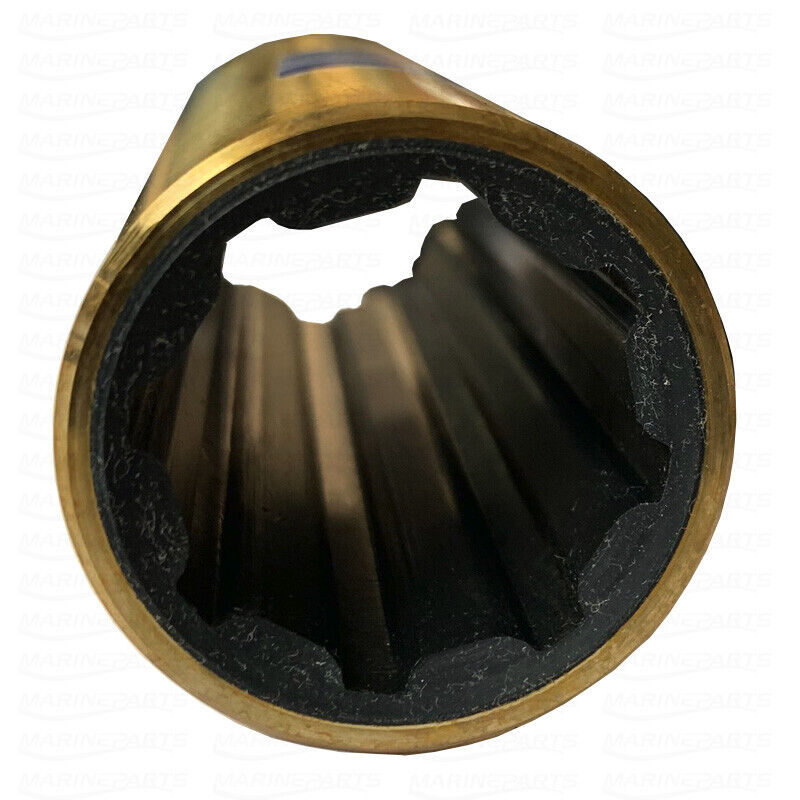
Cutlass Bearings
There are a couple of telltale signs that your boat's cutlass bearing needs changed:
- Vibration: An unusual vibration in the boat when the engine is on can indicate the bearing is worn and not turning smoothly.
- Noise: Hear a whining or grinding noise coming from the shaft area. This is another sign of friction caused by a worn bearing.
- Steering difficulties: If the boat seems difficult to steer at slow speeds, it could be a symptom of a loose shaft caused by a worn cutlass bearing.
- Water intrusion: When the bearings wear out, the shaft can have play within the bearing, which can cause excessive leaking at the packing gland.
An inspection of your cutlass bearings is performed at the time of each underwater hull cleaning, but if you're experiencing any of the above symptoms then let us know so we can investigate further. We sell and install Morse Rubber, Glide, and Exalto Marine bearings.
Request Service
Propellers
Boat propellers can become damaged by running aground, hitting foreign objects, or from electrolysys and galvanic corrosion that result from electrical issues on or around your boat, or from anodes having been neglected.
Even minor damage to your props can cause vibrations that may not be noticeable when operating your boat, but can put strain on other components such as cutlass bearings, couplers, and your transmission. It is always recommended to address prop damage as soon as possible to prevent further, and more costly, issues down the line.
Propeller services we provide:
- • Removal and installation both underwater and in the boatyard
- • Reconditioning
- • Static & Dynamic Balancing
- • Sales
- • Propspeed and antifouling coatings

Prop Shafts
If you're still experiencing a vibration after your props have been reconditioned and balanced, checking for a bent shaft is a good next step. This will usually require the shaft to be removed from the boat and checked with a dial indicator.
Prop shafts with minor damage can sometimes be repaired. However, if they're excessively damaged, bent, or pitted from corrosion, replacements may be required.
We can provide new prop shafts from 3/4" to 4" in diameter. All new shafts include new shaft couplings (to ensure a proper fit), keys, prop nuts, and cotter pins.
Request Service
Shaft Seals
Shaft seals are crucial components of a boat that perform two main tasks:
- Keeping water out: The seal prevents water outside the boat from entering the hull through the opening where the propeller shaft exits. This is important to maintain buoyancy and prevent water damage inside the boat.
- Allowing rotation: Even though the seal blocks water, it also needs to allow the propeller shaft to spin freely. This rotation transmits power from the engine to the propeller, driving the boat forward.
There are two main types of shaft seals used on boats:
- Stuffing Box / Packing Gland: This is a traditional and relatively simple design. It uses a compression mechanism to tighten braided wax-impregnated material around the shaft. This packing creates a watertight seal, but it's not perfect and will drip a small amount of water constantly. Regular maintenance is required to adjust the tightness and replace the packing when worn.
- Dripless Shaft Seals: This is a more modern design that offers a dripless operation. It uses a bellows with a carbon or ceramic face on one end that creates a seal against a rotating stainless steel ring on the shaft. A thin film of water provides lubrication between these surfaces. PSS seals are generally considered more maintenance-free than stuffing boxes, but proper inspection and replacement of worn parts are still important.
We provide PSS, Volvo Penta, Tides Marine, and Glide dripless shaft seals.
Request Service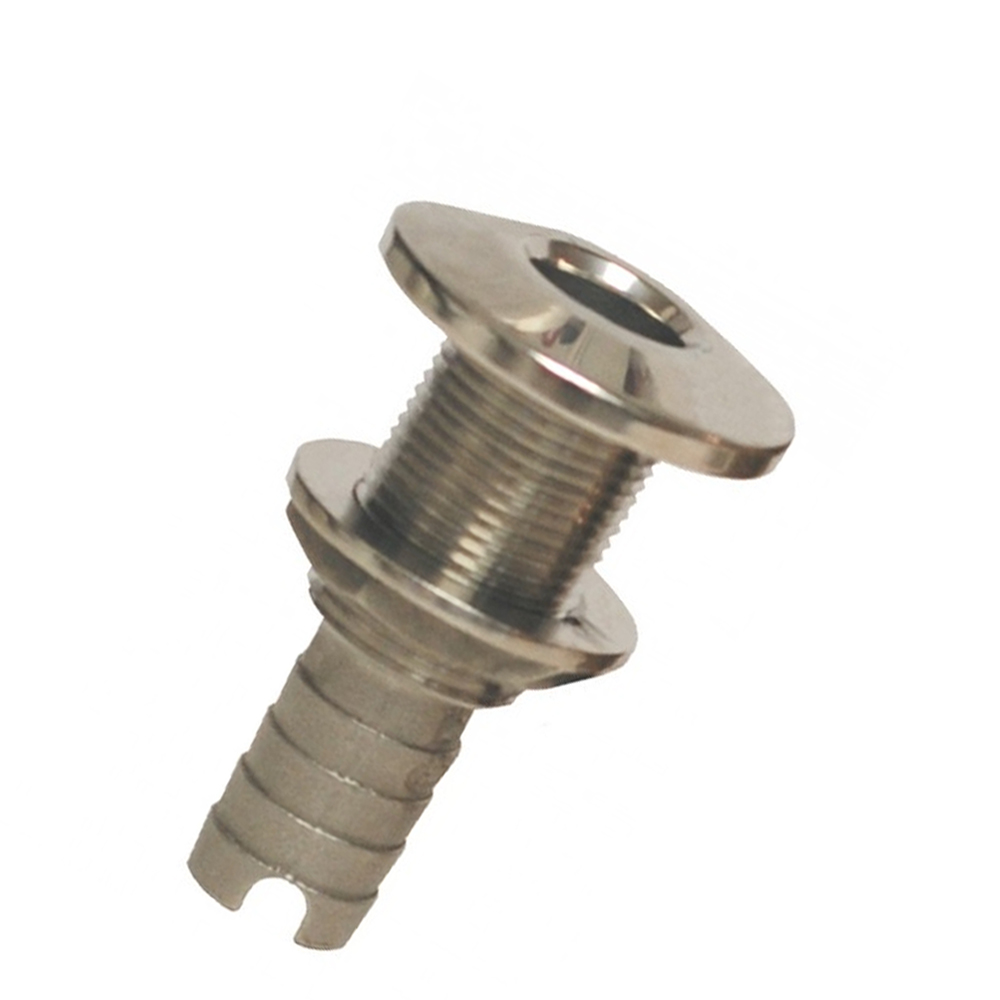
Thru-hulls
hru-hulls are crucial for a variety of purposes on a boat, including:
- Engine cooling: Seawater is drawn in through a thru-hull fitting to cool the engine and then discharged back out through another thru-hull fitting.
- Bilge drainage: Thru-hulls allow water that accumulates in the bilge (the lowest part of the hull) to be pumped out.
- Head discharge: Waste from the toilet is flushed out to sea through a thru-hull fitting.
- Livewell circulation: These fittings allow for the circulation of fresh water into a livewell, a compartment on a boat used to keep fish alive.
- Sensor placement: Thru-hulls are sometimes used to mount transducers for depth sounders, speedometers, and other instruments that require contact with the water.
It's important to note that thru-hulls are potential points of entry for water into the boat, so they need to be properly installed and maintained to prevent leaks. They also need to be made of a material that can withstand the corrosive effects of saltwater. Bronze and various alloys are commonly used for thru-hulls.
Request Service
Trim Tabs
A broken trim tab can affect your boat's handling and performance in a few ways, depending on the severity of the break and how the tabs are stuck (if at all). Here's what you might experience:
- Reduced performance: Without the ability to adjust the boat's attitude, you may find it takes longer to get on plane, experience more bow steer, or have a rougher ride in choppy water.
- Steering issues: If one trim tab is broken and stuck in position while the other functions normally, this can create an uneven force on the boat, making it harder to steer or causing it to pull to one side. In extreme cases, it could lead to a loss of control.
- Fuel inefficiency: A boat that's not trimmed properly will create more drag, which can lead to increased fuel consumption.
What to do if your trim tabs break:
- If you suspect a trim tab issue while on the water, proceed with caution and try to maintain control of the boat. Reduce speed and avoid rough water if possible.
- If safe to do so, try to manually adjust the tabs to see if they're just stuck or genuinely broken.
- Once back at the dock, it's important to have us inspect the trim tabs so we can diagnose the problem and recommend repairs or replacements.

Couplers
Boat shaft couplers, also known as propeller shaft couplings, are critical components that join the engine crankshaft to the propeller shaft in an inboard boat . They play a vital role in transmitting rotational power from the engine to the propeller, enabling the boat to move.
Signs of a damaged coupler:
- Excessive vibration: Increased vibration at the helm or throughout the boat can indicate coupler issues or misalignment.
- Abnormal noises: Clunking or grinding noises coming from the stern area can be signs of a damaged or failing coupler.
- Reduced performance: Difficulty getting on plane or reduced top speed could be caused by a coupler slipping due to wear or improper installation.
If you suspect a damaged coupler, it's crucial to have us inspect it as soon as possible. Early detection and replacement can prevent further damage to the engine, shaft, or other connected components.
Request Service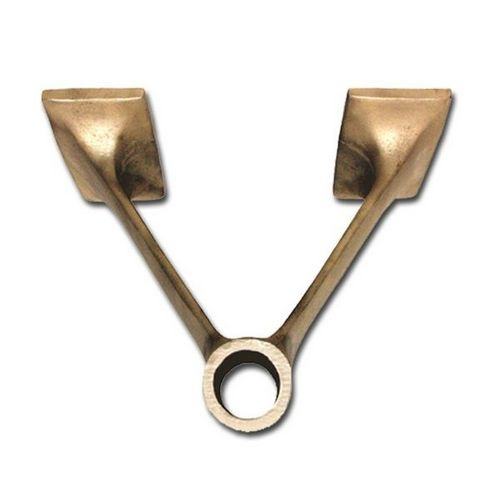
Struts
Struts are structural supports that hold the propeller shaft in place on inboard boats. They bear the weight of the propeller shaft and help prevent it from sagging or bending. This ensures proper alignment with the engine and minimizes vibrations.
Signs of a broken or damaged strut:
- Loss of propulsion: This is the most critical consequence. With the strut broken, the propeller shaft will likely become misaligned or loose, rendering the boat unable to move under its own power.
- Excessive vibration: A partially attached strut or dangling shaft can cause significant vibrations, potentially damaging other components like the engine mounts or shaft bearings.
- Reduced performance: Even a cracked strut can compromise its ability to support the shaft properly, leading to vibrations and potentially affecting boat handling and performance.
If you suspect your struts may be damaged or broken it's important to have our divers inspect them before continuing to use your boat.
We can replace, or repair, most struts.
Request Service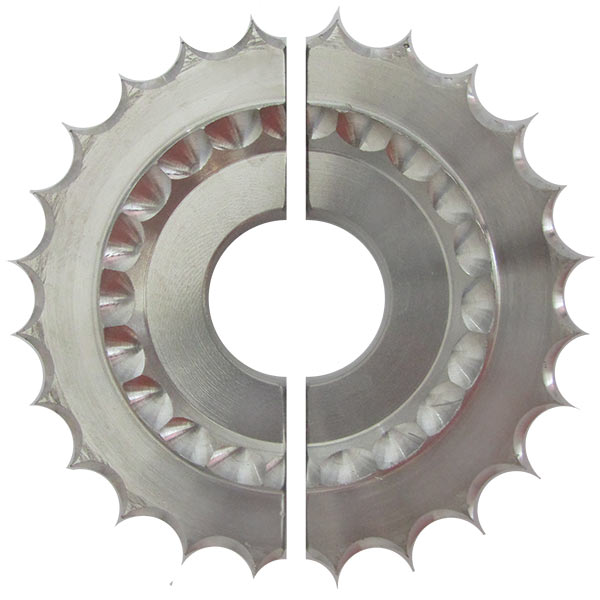
Line Cutters
Line cutters are devices attached to the propeller shaft of a boat . Their purpose is to sever ropes, fishing lines, nets, or even seaweed that might get wrapped around the propeller shaft and hinder the boat's performance.
Here's why line cutters are important:
- Prevent propeller damage: Lines and debris can tangle around the propeller, causing it to lose efficiency or become damaged altogether. In severe cases, a tangled prop can even seize the shaft, leaving you stranded.
- Maintain performance: Line cutters help prevent performance issues caused by tangled debris.
- Protect marine life: Discarded fishing lines and nets can be harmful to marine animals. Line cutters can help reduce the risk of entanglement for sea creatures.
While not mandatory on all boats, line cutters are highly recommended, especially for those who frequent areas with a lot of fishing activity or debris in the water. They offer peace of mind and can potentially save you from a costly repair or a situation where you're stuck on the water.
Our divers can replace, or install new line cutters without the need for a haul-out.
Request Service
Rudders
Importance of maintaining your rudder:
- Regularly inspect your rudder for damage, cracks, or loose fittings.
- Ensure the rudder is properly aligned for optimal performance and to prevent excessive wear.
- Our divers will inspect your rudders to identify and address any potential issues each time they clean your boat.
We can oftentimes repair, or replace, bent or broken rudders without having to haul your boat out.
Request Service
Pressure Washing
It's not unheard of some divers to use pressure washers underwater. Due to limited visibility, and reduced control over how hard the boat is being sprayed, we only recommend having your boat pressure washed while it's out of the water.
We recommend having your boat pressure washed to remove any residual marine buildup on the hull any time you haul out. This also prevents decaying marine life from stinking up the boatyard.
Request Service
Zincs
Replacing your anodes/zincs is required each time you haul out.
Boat zincs rely on a wet environment, specifically saltwater, to function properly and protect your boat's underwater metals from corrosion. If your boat zincs dry out, they lose their effectiveness and can no longer provide the sacrificial protection they're designed for.
When zincs dry out a layer of zinc hydroxide and calcium will form over the zincs rendering them unable to prove protection for your underwater metals. These zincs are referred to as being "passive".
When zinc anodes on a boat become passive, they lose their ability to effectively corrode sacrificially and protect the boat's underwater metals. This can have significant consequences for the boat's longevity and performance.
Request Service